In the ever-evolving automotive landscape, two players are making a significant mark in the compact SUV segment: the Kia Niro and the Mazda CX-30. Both models offer distinct features that cater to a variety of driver preferences, whether you're looking for hybrid technology or dynamic performance. Let’s explore these two contenders in depth and see how they stack up against each other in terms of technical specifications, innovations, and overall driving experience.
Kia Niro vs Mazda CX-30 – Performance, range & efficiency compared
Compare performance, boot capacity, efficiency and price at a glance.
Find out which car is the better choice for you – Kia Niro or Mazda CX-30?
Specifications Overview
The Kia Niro, available in full hybrid and plug-in hybrid variants, presents a unique opportunity for eco-conscious drivers. With a power output of up to 171 HP from its 1.6L 4-cylinder engine, the Niro excels in efficiency, boasting a fuel consumption rate as low as 4.4 L/100 km and a CO2 output of just 100 g/km. In contrast, the Mazda CX-30 features a gasoline mild-hybrid engine that delivers up to 186 HP from a 2.5L 4-cylinder engine. Its fuel consumption figures are slightly higher, ranging from 5.7 L/100 km to 6.6 L/100 km, with CO2 emissions varying from 129 g/km to 148 g/km.
Performance Metrics
When it comes to acceleration, the Kia Niro offers respectable figures with a 0-100 km/h time of 10.4 seconds for the most performant variant. Meanwhile, the Mazda CX-30 impressively races to the same mark in just 8.3 seconds, showcasing its sporty dynamics. The CX-30 also offers a top speed of up to 204 km/h, significantly exceeding the Niro's top speed of 160 km/h, which might appeal to those seeking a more exhilarating driving experience.
Design and Comfort
Both vehicles feature modern SUV styling, but their designs reflect different philosophies. The Kia Niro has a practical and functional design, emphasizing aerodynamic efficiency and cargo space. With 451 liters of trunk capacity, it is ideal for families and adventure seekers. Conversely, the Mazda CX-30 boasts a more sculpted exterior and an upscale interior that focuses on delivering an engaging driving experience combined with ample comfort, offering a trunk capacity of 430 liters.
Interior Technology and Innovations
In terms of interior technology, both models are well-suited for the tech-savvy consumer. The Kia Niro comes equipped with a wide array of safety features and an advanced infotainment system with smartphone integration via Android Auto and Apple CarPlay. The Mazda CX-30 also incorporates a user-friendly infotainment system but places a stronger emphasis on a driver-centric cabin design, combining elegance with functionality.
Driving Experience
The Niro’s hybrid engines provide a tranquil driving experience, making it perfect for city commuting while offering the flexibility of hybrid technology. Its adaptive cruise control and lane-keeping assist enhance the ease of driving. On the other hand, the Mazda CX-30's suspension setup and steering response deliver a sporty handling characteristic, making it enjoyable to drive on twisty roads while still maintaining comfort for daily commutes.
Value for Money
Pricing both vehicles competitively in their segments, the Kia Niro attracts buyers looking for eco-friendly solutions without compromising on performance. The cost-effective operation is substantiated by its impressive fuel economy and lower emissions. Alternatively, the Mazda CX-30 justifies its price with a premium feel, sporty performance, and an array of cutting-edge safety features that enhance its value.
Conclusion
Ultimately, the choice between the Kia Niro and the Mazda CX-30 boils down to personal preferences and priorities. If efficiency and hybrid technology top your list, the Niro stands out as an excellent choice. However, if you seek sporty handling and a touch of luxury, the CX-30 may be better suited for your needs. Whichever you choose, both models represent exceptional value in the compact SUV class, offering unique qualities that cater to different driving styles and lifestyles.
Here’s where it gets real: The technical differences in detail
Costs and Efficiency:
When it comes to price and running costs, the biggest differences usually appear. This is often where you see which car fits your budget better in the long run.
Mazda CX-30 has a somewhat advantage in terms of price – it starts at 25200 £, while the Kia Niro costs 29100 £. That’s a price difference of around 3900 £.
Fuel consumption also shows a difference: Kia Niro manages with 2.40 L and is therefore decisively more efficient than the Mazda CX-30 with 5.70 L. The difference is about 3.30 L per 100 km.
Engine and Performance:
Under the bonnet, it becomes clear which model is tuned for sportiness and which one takes the lead when you hit the accelerator.
When it comes to engine power, the Mazda CX-30 has a barely noticeable edge – offering 186 HP compared to 180 HP. That’s roughly 6 HP more horsepower.
In acceleration from 0 to 100 km/h, the Mazda CX-30 is slightly quicker – completing the sprint in 8.30 s, while the Kia Niro takes 9.90 s. That’s about 1.60 s faster.
In terms of top speed, the Mazda CX-30 performs slight better – reaching 204 km/h, while the Kia Niro tops out at 185 km/h. The difference is around 19 km/h.
There’s also a difference in torque: Kia Niro pulls hardly perceptible stronger with 265 Nm compared to 240 Nm. That’s about 25 Nm difference.
Space and Everyday Use:
Whether family car or daily driver – which one offers more room, flexibility and comfort?
Both vehicles offer seating for 5 people.
In curb weight, Mazda CX-30 is minimal lighter – 1455 kg compared to 1474 kg. The difference is around 19 kg.
In terms of boot space, the Kia Niro offers minimal more room – 451 L compared to 430 L. That’s a difference of about 21 L.
In maximum load capacity, the Kia Niro performs hardly perceptible better – up to 1445 L, which is about 39 L more than the Mazda CX-30.
When it comes to payload, Mazda CX-30 slight takes the win – 496 kg compared to 466 kg. That’s a difference of about 30 kg.
Who wins the race?
The Kia Niro proves to be wins the duel decisively and therefore becomes our DriveDuel Champion!
Kia Niro is the better all-rounder in this comparison.
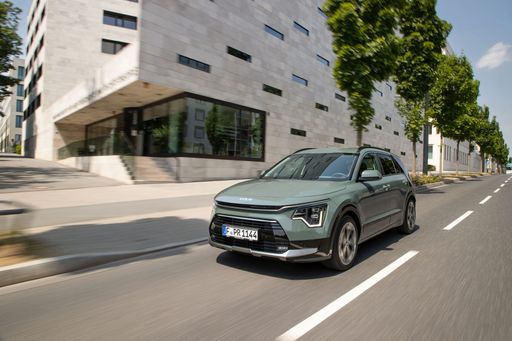 @ Kia Corporation
@ Kia Corporation
Kia Niro
Kia Niro
The Kia Niro blends clever packaging and modern styling into a compact crossover that’s refreshingly sensible for daily life. It’s comfortable, economical and packed with user‑friendly tech, so if you want a fuss‑free family car with a touch of green credibility, the Niro is worth a test drive.
details @ Kia Corporation
@ Kia Corporation
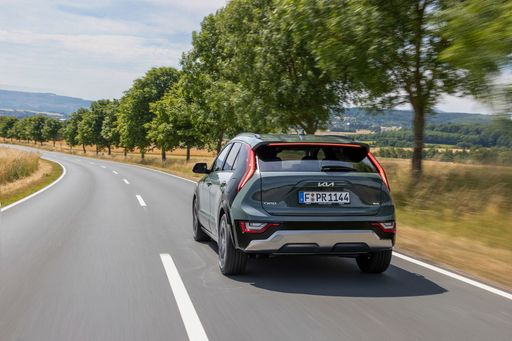 @ Kia Corporation
@ Kia Corporation
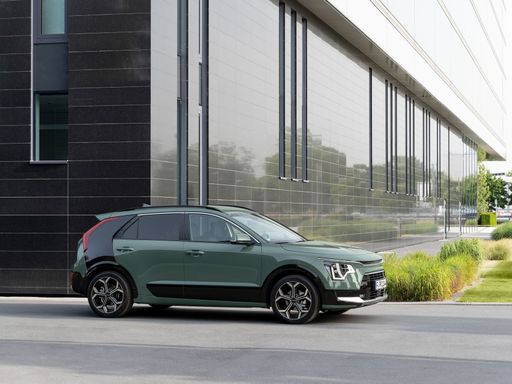 @ Kia Corporation
@ Kia Corporation
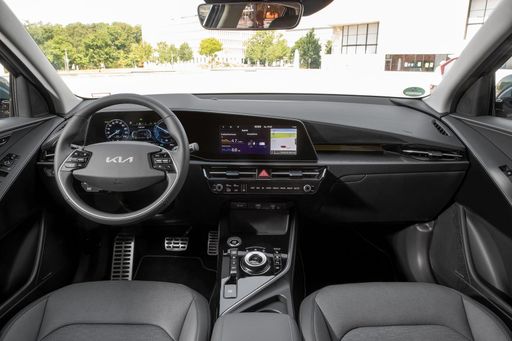 @ Kia Corporation
@ Kia Corporation
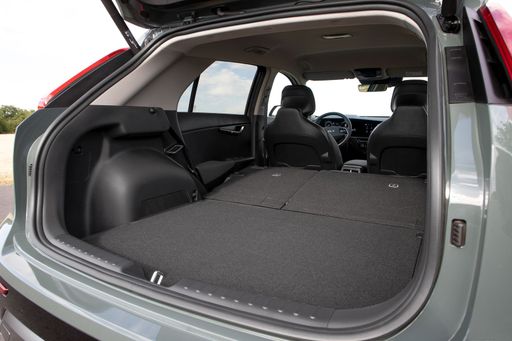 @ Kia Corporation
@ Kia Corporation
Mazda CX-30
The Mazda CX-30 blends sleek coupe-like lines with the practicality of a compact crossover, feeling more premium than its price tag suggests. It’s a joy to drive for anyone who likes a taut chassis and an interior that treats daily commutes like a small luxury escape.
details @ Mazda Motor Corporation
@ Mazda Motor Corporation
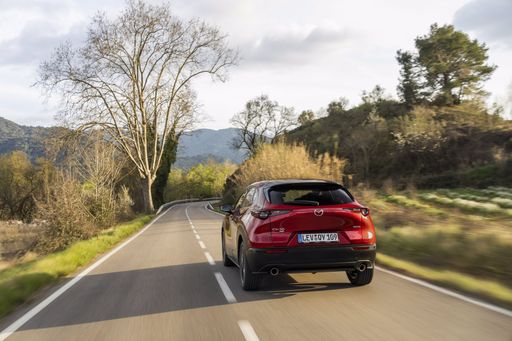 @ Mazda Motor Corporation
@ Mazda Motor Corporation
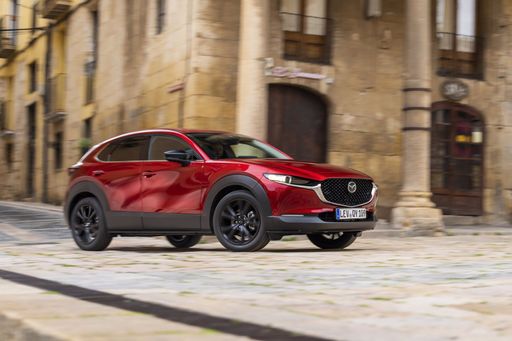 @ Mazda Motor Corporation
@ Mazda Motor Corporation
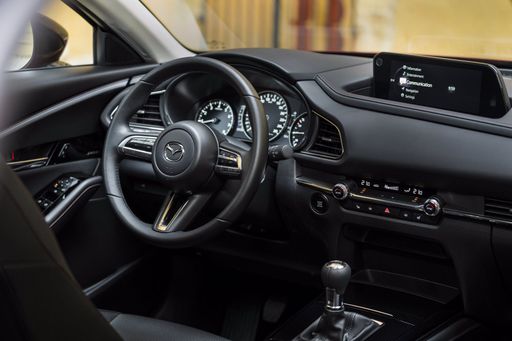 @ Mazda Motor Corporation
@ Mazda Motor Corporation
 @ Kia Corporation
@ Kia Corporation
|
 @ Mazda Motor Corporation
@ Mazda Motor Corporation
|
|
|
|
Costs and Consumption |
|
|---|---|
|
Price
29100 - 38600 £
|
Price
25200 - 36800 £
|
|
Consumption L/100km
2.4 - 4.9 L
|
Consumption L/100km
5.7 - 6.6 L
|
|
Consumption kWh/100km
-
|
Consumption kWh/100km
-
|
|
Electric Range
57 - 62 km
|
Electric Range
-
|
|
Battery Capacity
1.3 - 11.1 kWh
|
Battery Capacity
-
|
|
co2
53 - 111 g/km
|
co2
129 - 148 g/km
|
|
Fuel tank capacity
37 - 42 L
|
Fuel tank capacity
48 - 51 L
|
Dimensions and Body |
|
|---|---|
|
Body Type
SUV
|
Body Type
SUV
|
|
Seats
5
|
Seats
5
|
|
Doors
5
|
Doors
5
|
|
Curb weight
1474 - 1594 kg
|
Curb weight
1455 - 1587 kg
|
|
Trunk capacity
348 - 451 L
|
Trunk capacity
422 - 430 L
|
|
Length
4420 mm
|
Length
4395 mm
|
|
Width
1825 mm
|
Width
1795 mm
|
|
Height
1545 mm
|
Height
1540 mm
|
|
Max trunk capacity
1342 - 1445 L
|
Max trunk capacity
1398 - 1406 L
|
|
Payload
466 kg
|
Payload
458 - 496 kg
|
Engine and Performance |
|
|---|---|
|
Engine Type
Full Hybrid, Plugin Hybrid
|
Engine Type
Petrol MHEV
|
|
Transmission
Automatic
|
Transmission
Manuel, Automatic
|
|
Transmission Detail
Dual-Clutch Automatic
|
Transmission Detail
Manual Gearbox, Automatic Gearbox
|
|
Drive Type
Front-Wheel Drive
|
Drive Type
Front-Wheel Drive, All-Wheel Drive
|
|
Power HP
138 - 180 HP
|
Power HP
140 - 186 HP
|
|
Acceleration 0-100km/h
9.9 - 11.4 s
|
Acceleration 0-100km/h
8.3 - 10.3 s
|
|
Max Speed
170 - 185 km/h
|
Max Speed
191 - 204 km/h
|
|
Torque
265 Nm
|
Torque
238 - 240 Nm
|
|
Number of Cylinders
4
|
Number of Cylinders
4
|
|
Power kW
102 - 132 kW
|
Power kW
103 - 137 kW
|
|
Engine capacity
1580 cm3
|
Engine capacity
1998 - 2488 cm3
|
General |
|
|---|---|
|
Model Year
2025
|
Model Year
2025
|
|
CO2 Efficiency Class
C, B
|
CO2 Efficiency Class
D, E
|
|
Brand
Kia
|
Brand
Mazda
|
Is the Kia Niro offered with different drivetrains?
The Kia Niro is available as Front-Wheel Drive.
The prices and data displayed are estimates based on German list prices and may vary by country. This information is not legally binding.
